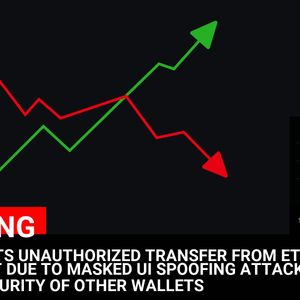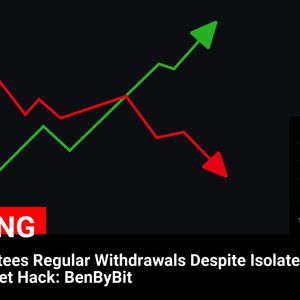The world of cryptocurrency, often lauded for its decentralized and permissionless nature, is increasingly under scrutiny for its use in illicit activities. A recent Chainalysis report has brought to light a concerning trend: sanctioned entities and jurisdictions have received a staggering $15.8 billion in crypto transactions in 2024. This revelation highlights the complex intersection of digital assets and global sanctions, raising critical questions about compliance and the future of cryptocurrency regulation. Let’s dive deep into this eye-opening report and understand its implications for the crypto landscape. Why are Sanctioned Entities Turning to Crypto Transactions? Sanctions, imposed by bodies like the U.S. Office of Foreign Assets Control (OFAC), are designed to restrict access to the traditional financial system for nations, entities, or individuals deemed to be engaging in activities against international norms or U.S. interests. However, the decentralized nature of cryptocurrency offers a potential loophole. Here’s why sanctioned entities are increasingly drawn to crypto transactions : Bypassing Financial Restrictions: Traditional financial institutions are heavily regulated and must comply with international sanctions. Cryptocurrency, operating outside these traditional frameworks, offers a way to circumvent these restrictions. Preserving Wealth: In regions facing economic instability or sanctions, local currencies can be volatile. Cryptocurrency, particularly stablecoins, can act as a store of value, helping individuals and entities preserve their wealth outside of traditional banking systems. Facilitating Cross-Border Transactions: Sanctions often disrupt international trade and financial flows. Cryptocurrency can enable cross-border transactions without the need for traditional intermediaries like banks, making it easier to conduct international business, even under sanctions. Anonymity and Privacy: While not entirely anonymous, cryptocurrency transactions can offer a degree of pseudonymity, making it harder to trace the origin and destination of funds compared to traditional banking. Key Findings from the Chainalysis Report on Illicit Crypto Activity The Chainalysis report paints a detailed picture of how sanctioned entities are utilizing cryptocurrency. Let’s break down the key takeaways regarding illicit crypto activity : Significant Volume: $15.8 billion in cryptocurrency was received by sanctioned entities in the past year, representing a substantial portion of the overall illicit crypto transaction volume. Dominance of Sanctioned Entities: Transactions involving sanctioned entities accounted for a massive 39% of all illicit cryptocurrency activity. This indicates a strong correlation between sanctions and the usage of crypto for illicit purposes. Regional Hotspots: Countries under heavy sanctions, like Iran, are seeing increased cryptocurrency adoption. Centralized exchanges (CEXs) in these regions are experiencing a surge in activity as residents seek refuge from financial restrictions and currency devaluation. Russia’s Evasion Tactics: Despite sanctions targeting Russia’s military funding, entities like KB Vostok OOO, a Russian UAV manufacturer, are allegedly using local crypto exchanges and platforms like Garantex to bypass these restrictions. Garantex alone processed over $100 million in transactions, highlighting the scale of potential circumvention. Mixing Services on the Rise: Crypto mixing services, like Tornado Cash, have witnessed a 108% increase in inflows. These services, often used to obfuscate the origin of funds, are being leveraged by groups like Lazarus to launder hacked cryptocurrency. Compliance Efforts Showing Impact: On a positive note, the report indicates that compliance efforts are having some effect. Offshore exchanges are showing reduced interaction with Iranian services, suggesting that regulatory pressure and compliance measures are starting to make a difference. Examples of Sanctioned Entities and Crypto Usage To further illustrate the issue, let’s look at some specific examples from the Chainalysis report : Entity/Region Activity Key Crypto Platforms Impact Iran Wealth preservation, bypassing financial restrictions Centralized Exchanges (CEXs) Surge in crypto transactions on local CEXs KB Vostok OOO (Russia) Military funding circumvention Local crypto exchanges, Garantex Allegedly bypassed sanctions using crypto Lazarus Group (North Korea) Money laundering of hacked funds Tornado Cash (crypto mixer) Utilized mixers to obfuscate illicit funds Challenges in Combating Illicit Crypto Transactions by Sanctioned Entities Addressing the use of cryptocurrency by sanctioned entities presents a unique set of challenges: Decentralization: The very nature of cryptocurrency, being decentralized and borderless, makes it difficult for traditional regulatory bodies to control and monitor transactions. Pseudonymity: While blockchain transactions are transparent, the pseudonymous nature of wallet addresses can make it challenging to identify the real-world entities behind them. Global Nature: Cryptocurrency operates globally, meaning that sanctioned entities can potentially use exchanges and services in jurisdictions with weaker regulatory frameworks. Technological Sophistication: Illicit actors are becoming increasingly sophisticated in their use of technology, employing mixers, privacy coins, and other tools to evade detection. Enforcement Complexity: Enforcing sanctions in the crypto space requires international cooperation and coordination, which can be complex and time-consuming. Actionable Insights and the Path Forward for Cryptocurrency Sanctions Compliance Despite the challenges, there are actionable steps that can be taken to improve compliance and mitigate the risks associated with cryptocurrency sanctions : Enhanced Regulatory Frameworks: Governments and regulatory bodies need to develop clearer and more comprehensive regulatory frameworks for cryptocurrency, specifically addressing sanctions compliance. Improved KYC/AML Procedures: Cryptocurrency exchanges and service providers must implement robust Know Your Customer (KYC) and Anti-Money Laundering (AML) procedures to identify and prevent transactions involving sanctioned entities. Blockchain Analytics and Monitoring: Leveraging blockchain analytics tools, like those provided by Chainalysis, is crucial for monitoring transactions and identifying suspicious activity linked to sanctioned entities. International Collaboration: Increased international cooperation and information sharing are essential to effectively track and disrupt illicit crypto flows across borders. Public-Private Partnerships: Collaboration between government agencies, blockchain analytics firms, and cryptocurrency businesses can lead to more effective strategies for sanctions compliance. Conclusion: A Wake-Up Call for the Crypto Industry The Chainalysis report serves as a stark reminder of the challenges and responsibilities facing the cryptocurrency industry. While crypto offers numerous benefits, its potential for misuse by sanctioned entities and illicit actors cannot be ignored. As the crypto landscape continues to evolve, proactive measures, robust compliance frameworks, and international collaboration are paramount to ensure that this innovative technology is not exploited to undermine global security and financial integrity. The $15.8 billion figure is not just a number; it’s a wake-up call for the entire crypto ecosystem to double down on efforts to combat illicit activity and ensure responsible innovation. To learn more about the latest explore our article on key developments shaping cryptocurrency sanctions compliance and regulation.



















